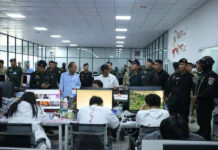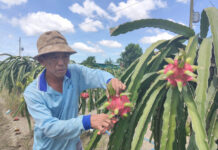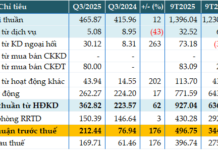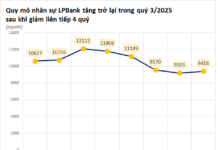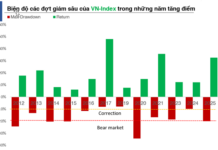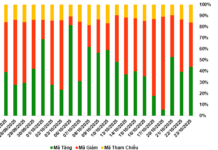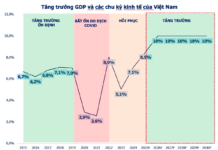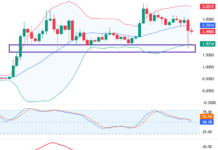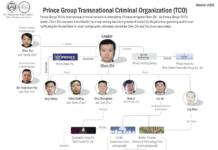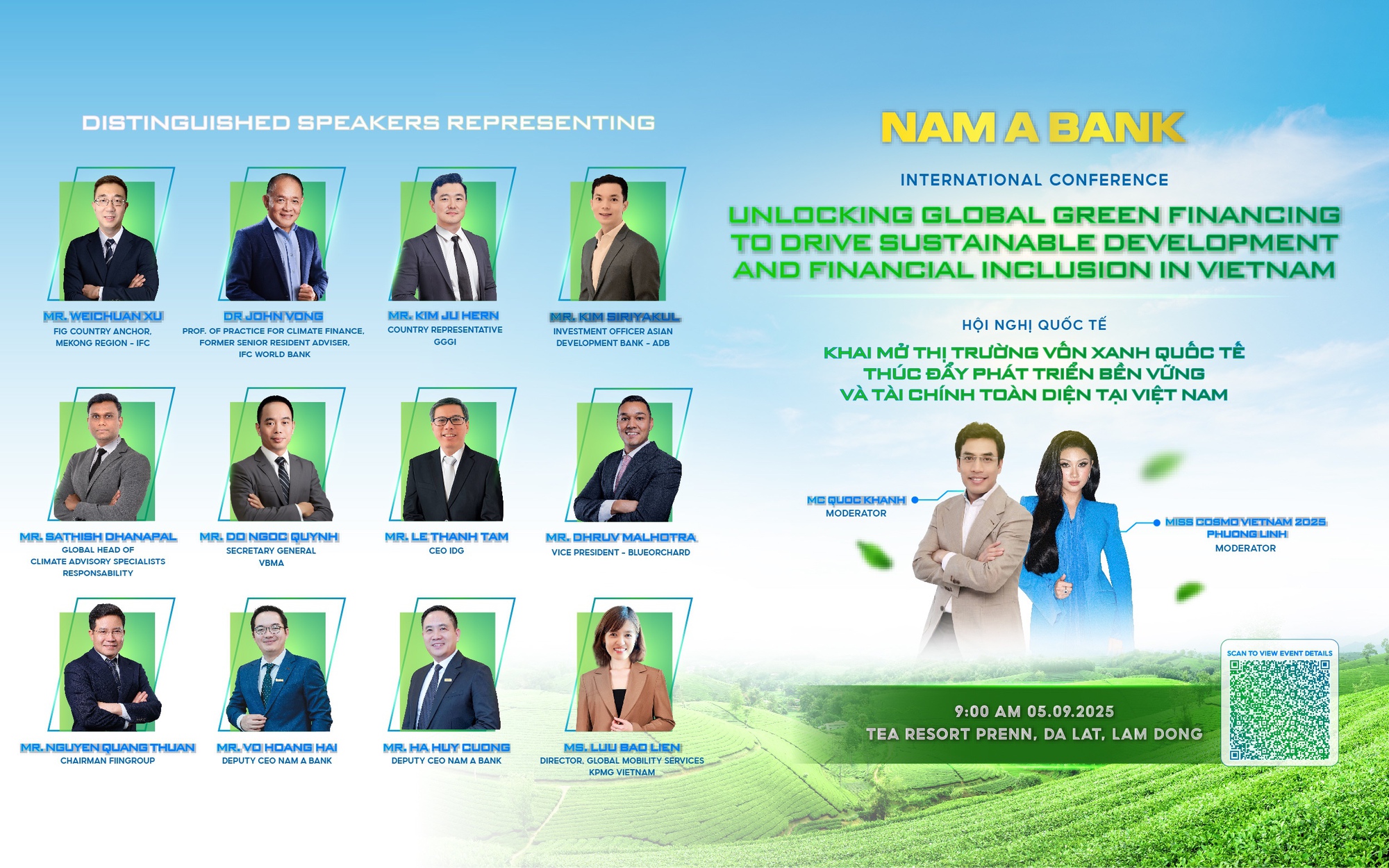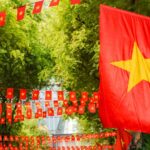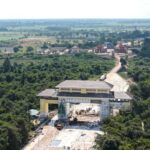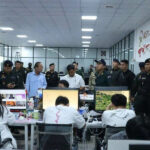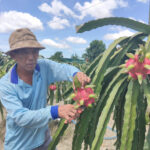On September 5th, Nam A Bank (code: NAB on HoSE) organized an international conference themed “Unlocking International Green Finance Market – Promoting Sustainable Development and Financial Inclusion in Vietnam” at Tea Resort Prenn, Dalat.
This international-scale conference gathered a diverse ecosystem of policymakers, senior leaders from leading investment funds, development finance institutions (DFIs), domestic and foreign financial institutions, business associations, and especially enterprises seeking green finance for their transition and development.
The first discussion panel, held this morning, focused on the theme “Unlocking the International Green Finance Market,” a crucial factor in helping Vietnam achieve its green transition and net-zero commitments. This is not just a financial issue but also a responsibility and a path towards sustainable development.
The panel discussion delved into core issues such as:
- How can Vietnamese businesses and financial institutions meet the stringent standards of the global green finance market?
- What opportunities and challenges lie ahead in attracting international investors to green projects in Vietnam?
- What is the role of government agencies and international financial organizations in creating a favorable legal framework and an attractive investment environment?
The speakers provided a comprehensive overview of the global and Vietnamese green finance markets, the journey of climate finance in Asia, gender-lens lending solutions, and initiatives to promote financial inclusion for businesses, especially small and medium-sized enterprises (SMEs).
Green transition is inevitable and indisputable
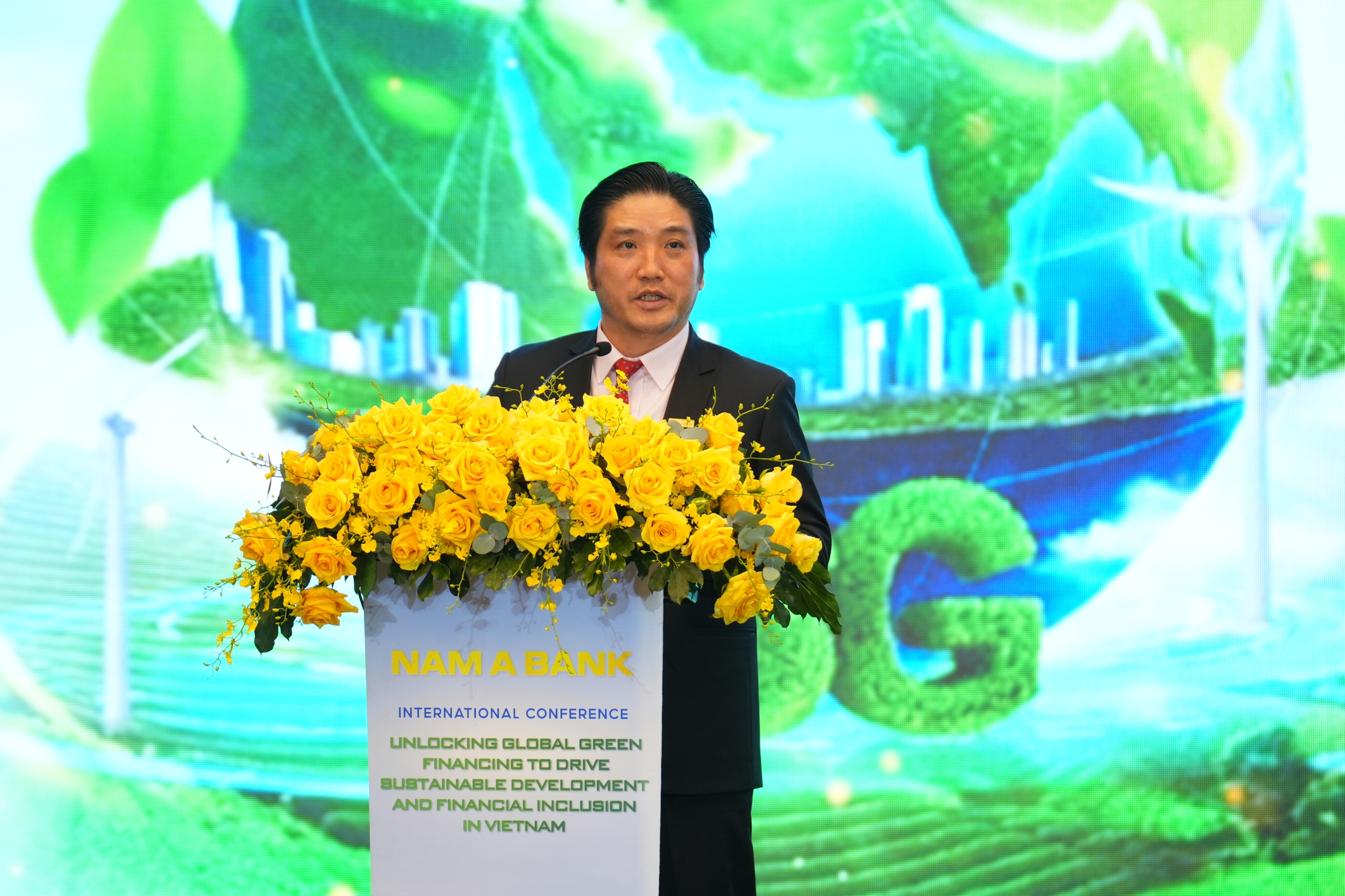
Mr. Tran Khai Hoan, Member of the Board of Directors and Acting CEO of Nam A Bank
Speaking at the conference, Mr. Tran Khai Hoan, Member of the Board of Directors and Acting CEO of Nam A Bank, stated that globally, green finance and financial inclusion have proven to be pivotal in sustainable development, with strong support from governments and international institutions. This is evident through the Paris Agreement and the Sustainable Development Goals. In parallel, financial inclusion is creating opportunities for all economic sectors, especially the private sector, to easily access capital and enhance their competitiveness.
In this context, Vietnam has demonstrated a strong commitment to achieving its net-zero target by 2050, alongside strategies to promote financial inclusion and develop the private sector. This presents both challenges and opportunities for Vietnam to become an attractive destination for global green finance and underscores the critical need for a comprehensive financial ecosystem with the private sector playing a leading role.
Mr. Hoan believes that the path to sustainable development is a long journey filled with challenges and opportunities. No country or organization can walk this path alone. We need collaboration, connection, and partnership to turn aspirations into actions and commitments into tangible outcomes.
In line with this global trend, Nam A Bank recognizes its role in pioneering the promotion of green finance solutions. With a transparent governance foundation based on international standards such as IFRS, Basel III, and ESMS, Nam A Bank is committed to becoming a model sustainable development bank in Vietnam’s private sector, accompanying the government and the international community in the journey towards sustainable development and financial inclusion in Vietnam.
An estimated $20 billion is needed annually to achieve green transition and project goals
Mr. Nguyen Quoc Hung, Vice Chairman and General Secretary of the Vietnam Bankers Association, pointed out that developing the green finance market in Vietnam still faces several barriers that need to be addressed. These include:
First, mobilizing financial resources to achieve net-zero emissions by 2050. According to the World Bank, Vietnam requires an investment of approximately 6.8% of GDP annually, equivalent to $368 billion by 2040. This necessitates mechanisms and policies to mobilize domestic and foreign capital, promote the development of the green finance market, and encourage private sector investment in green economic sectors.
Second, from 2017 to the present, the green credit and green bond markets have grown at a rate of over 20% per year, significantly outpacing the overall credit growth of the economy.
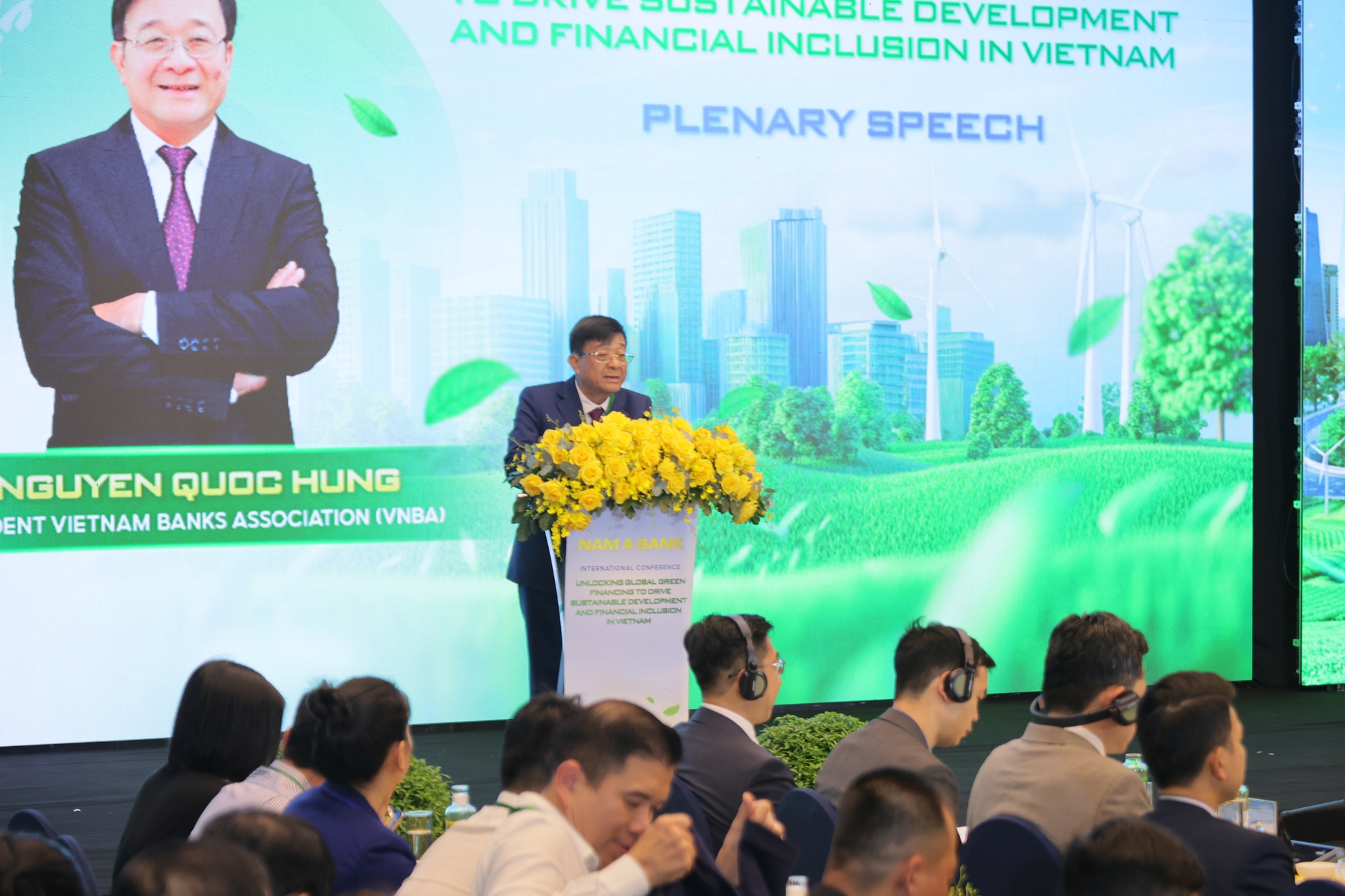
Mr. Nguyen Quoc Hung shared that the proportion of green credit and green bond outstanding balance is still modest compared to the capital demand of about $20 billion per year.
However, the outstanding balance of green credit accounts for less than 4.5% of total outstanding credit, and only $1.16 billion in green bonds have been issued in the past five years. This remains modest compared to the capital demand of about $20 billion per year to achieve green transition and project goals.
Regarding the green credit market, as of June 30, 2025, 63 credit institutions had green credit outstanding balances totaling over VND 736,000 billion, an increase of 8.35% compared to the end of 2024. This accounts for 4.3% of the total outstanding credit of the economy, mainly focused on renewable energy and clean energy sectors (over 39%) and green agriculture (over 26%).
For the green bond market, as of mid-April 2025, the outstanding balance of this market reached more than VND 30,000 billion, accounting for 2% of the total outstanding corporate bond balance in Vietnam.
Third, in the context of the country’s strong shift towards developing a digital economy, data is a crucial tool for digital and green transformation and is recognized as a “new resource and a strategic asset” in Resolution 57-NQ/TW.
IFC commits $400 million in financing for green projects in Vietnam
Mr. Weichuan Xu, FIG Country Anchor for the Mekong Region at the International Finance Corporation (IFC), noted that an increasing number of countries are committing to net-zero targets. The green factor in lending is becoming more prominent, and the demand for information in this area is growing.
Mr. Xu emphasized that Vietnam faces a massive financial challenge in its green transition, but this also presents a significant opportunity. According to World Bank calculations, to achieve net-zero emissions by 2050, Vietnam needs an additional $368 billion in the period from 2022 to 2040, equivalent to 6.8% of GDP annually. Just in the next decade, nearly $10 billion will be needed annually to meet energy demands and decarbonize the economy. This presents both a challenge and a vast business opportunity. It is clear that relying solely on the government is not enough, and the private sector needs to take the lead.
According to Mr. Xu, the Vietnamese government has taken significant steps with the Green Banking Development Project, the Action Program for the Banking Sector for the Green Growth Strategy, and especially Decision 21/2025/QD-TTg on issuing green classification criteria.
Mr. Xu affirmed that IFC accompanies Vietnam through a combination of investment and advisory services. Specifically, IFC has committed more than $2.8 billion to the financial sector, including $400 million in financing for green projects. IFC also supports the development of an ESG roadmap, the creation of new financial products such as green, social, and sustainable bonds, and the enhancement of environmental and social risk management.
Digital banking model in the green transition
At the conference, Mr. Le Tam, CEO of IDG Vietnam, presented on the topic “International Green Transition Model and Lessons for Vietnamese Commercial Banks.”
Mr. Tam mentioned that many countries have successfully implemented sustainable development models, notably the Water-Hydrogen-Carbon triangle strategy. Under this strategy, water is considered a core resource to ensure energy security and produce clean hydrogen; hydrogen is applied in transportation and industry to build a clean energy economy, while carbon dioxide is captured from industrial activities, recycled into synthetic fuels, or stored underground to minimize environmental impact.
Mr. Tam also referred to a digital banking model in the UK (Starling Bank), which operates entirely without branches, transaction offices, or ATMs. All services are provided through mobile applications, voice, or email. This “branchless, paperless” model is positioned with three values: fast technology, fair service, and transparency. Customers can experience all-in-one services, from account opening and money transfers to financial management, directly on their phones. This bank has also committed to net-zero emissions since 2021, aiming to neutralize annual emissions, reduce emissions by one-third by 2030, and achieve net-zero by 2050.
DISCUSSION
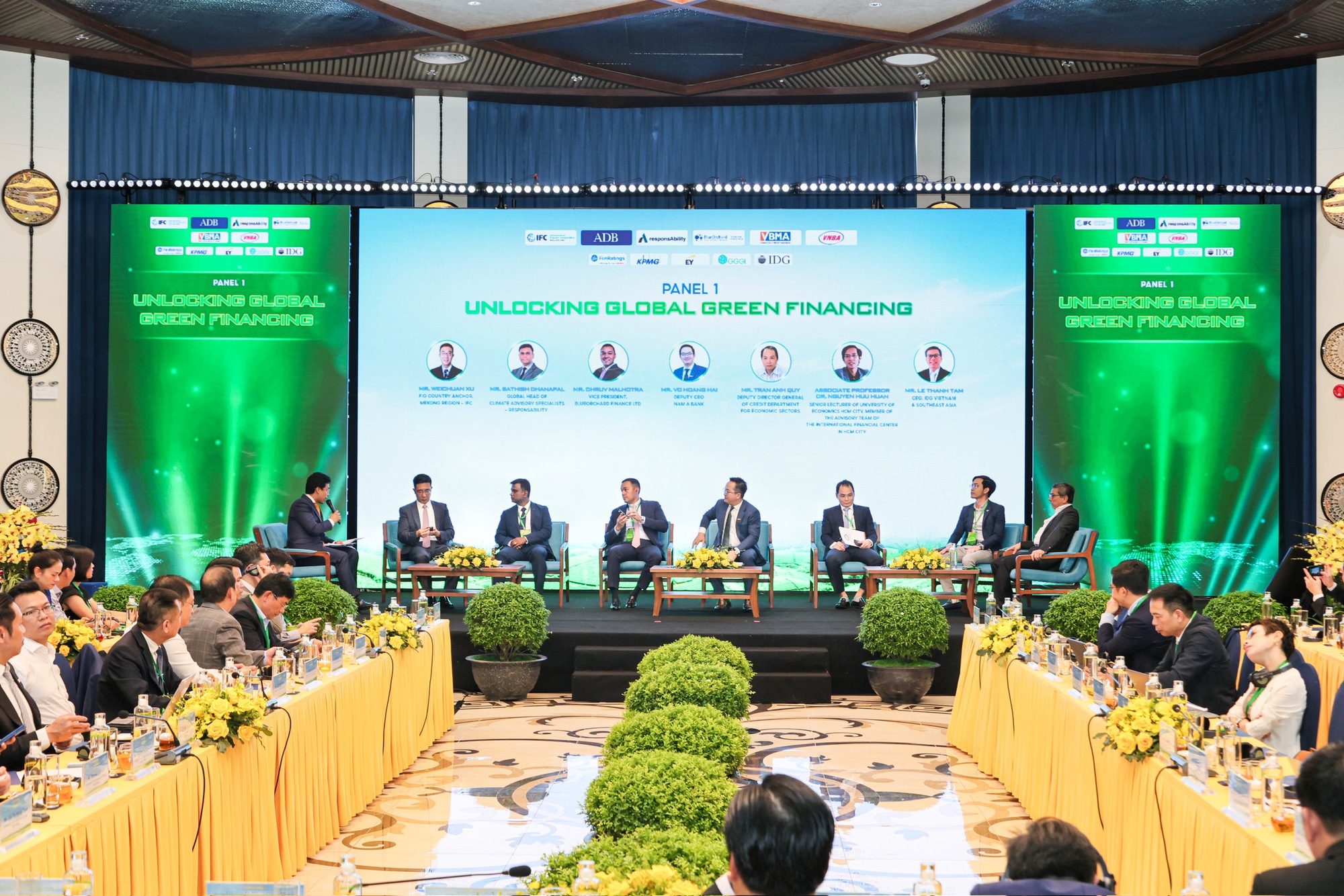
Panel Discussion
ESG governance must start from the highest leadership level
Mr. Sathish Dhanapal, Director of Climate Finance for responsAbility Investments AG, shared that while ESG used to be seen as a slogan, it has now become a practical reality. Banks are increasingly focused on transparency, which demands changes from within.
He believes that ESG governance must start from the highest leadership level, with a clear commitment that trickles down to the lower levels. The team needs to understand that ESG is not a formality but a serious undertaking linked to the development strategy.
More importantly, robust implementation processes and systems must be established, as they form the foundation for effective ESG operations.
Mr. Vo Hoang Hai, Deputy CEO of Nam A Bank: Banks are the link to green finance for businesses
Green finance is not like traditional lending; it requires a rigorous selection and screening process, along with a transparent risk assessment framework.
In this process, Nam A Bank has learned three important lessons:
First, the application of international standards should not be mechanical. Flexibility is needed to adapt to the local context. When applied in Vietnam, adjustments are necessary to align with the production reality.
Second, human resources are a critical factor. We must build a strong internal capacity team equipped with the knowledge, experience, and tools to implement green projects.
Additionally, to optimize green finance, it is essential to raise customers’ awareness. They must understand that the green transition is not a short-term investment with immediate results but a long-term journey that demands perseverance.
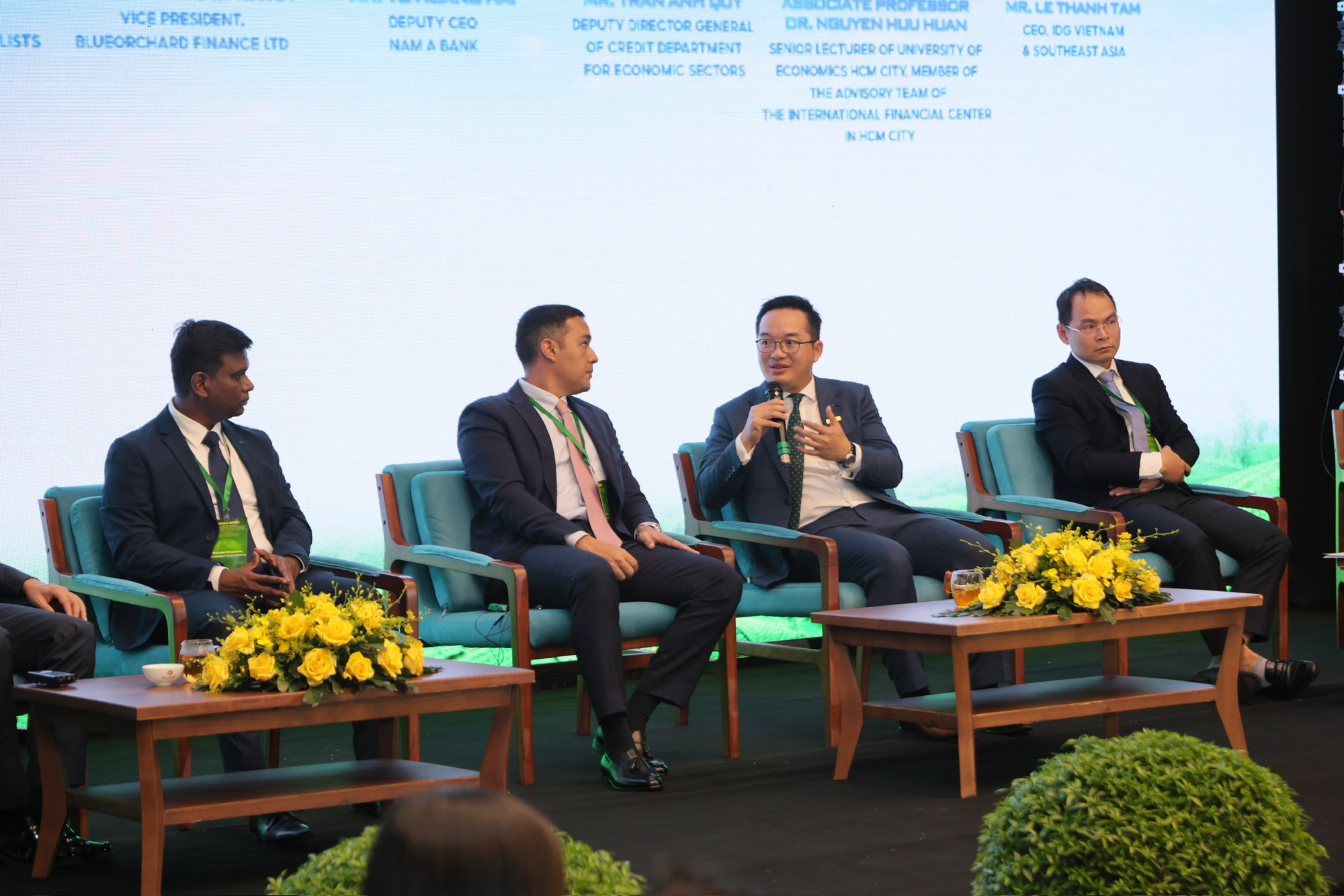
Mr. Vo Hoang Hai, Deputy CEO of Nam A Bank (second from right), shared three important lessons learned by the bank in promoting green finance.
When attracting green finance, Nam A Bank not only provides capital but also offers technical support, helps customers restructure, and acts as a bridge for them to access international capital. “We also expand our network and accompany our customers in their journey towards sustainable development,” said Mr. Hai.
Mr. Dhruv Malhotra, Vice President of BlueOrchard, pointed out that small and medium-sized enterprises (SMEs) still face significant gaps in accessing support. This group is vulnerable to natural disasters and climate change, so appropriate insurance mechanisms are needed at various levels.
He suggested establishing intermediary institutions to fill this gap, helping SMEs access the necessary protection tools and resources to maintain sustainable operations.
International Financial Center opens up a new future
Associate Professor Dr. Nguyen Huu Huan, Member of the Consulting Group for the Establishment of the Ho Chi Minh City International Financial Center, emphasized the crucial role of the International Financial Center (IFC) in attracting green finance. Each year, we require a substantial amount of capital to facilitate the green transition. Without an international financial center, banks have to seek trust funds to obtain financing for projects, which entails significant costs and resources.
With the establishment of the IFC, it will become a hub connecting investment funds, especially green finance funds, to Vietnam. We will have a clear investment portfolio, making it easier for funds to find opportunities without spending too much time searching.
As the market forms and the legal framework is established, transparency will improve. This is an essential factor in giving investment funds the confidence to disburse more boldly.
Watch the live program HERE
“Vietnam Emerges as a Rising Economic Powerhouse”
“In recent years, Vietnam has been emerging as a new economic powerhouse, according to Ramla Khalidi, the United Nations Development Programme (UNDP) Resident Representative in the country.
The Grand Opening of a Project that Could Help Vietnam and Cambodia Reap $20 Billion
When this project is operational, it will significantly boost bilateral trade between Vietnam and Cambodia.

